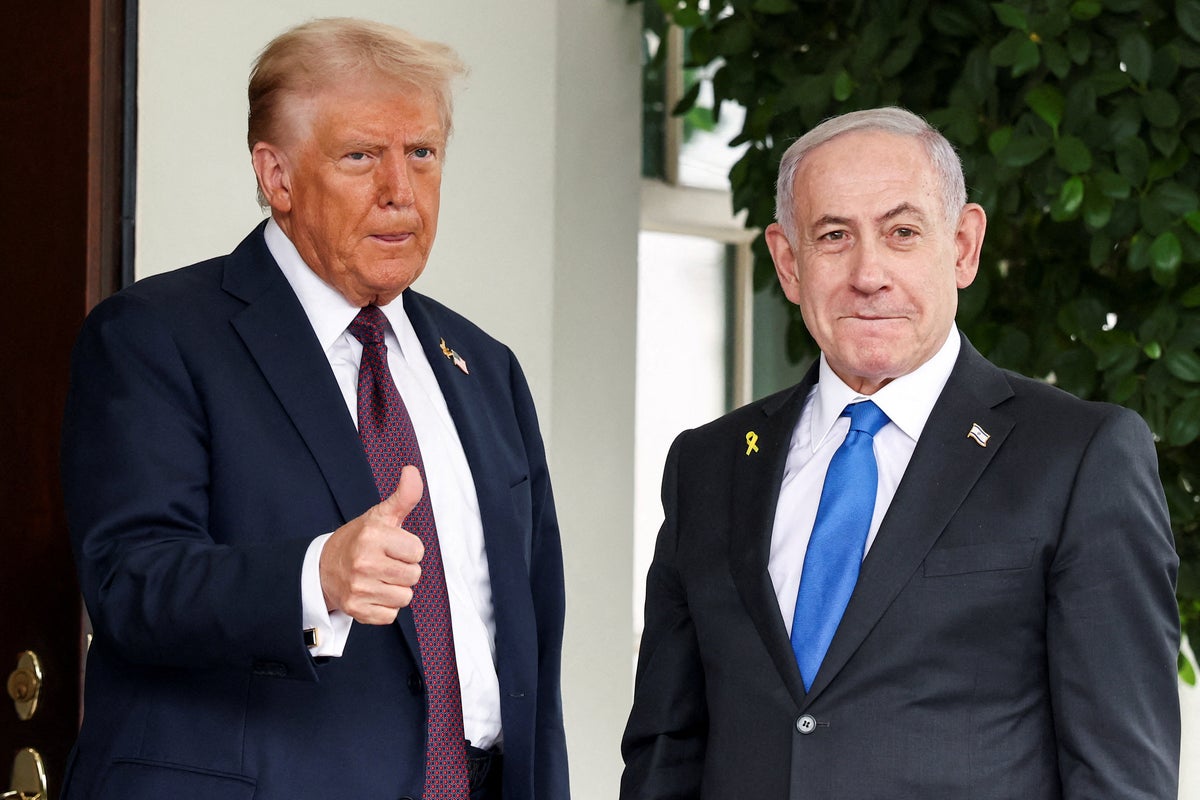
Hamas and Israel will begin discussions on a long-term peace deal this week, after agreeing in principle to Donald Trump’s 20-point plan for war-torn Gaza.
Egypt is hosting negotiations between both sides beginning on Monday, after the US president presented the peace plan alongside Israeli prime minister Benjamin Netanyahu.
Hamas responded with a carefully-worded statement which agreed to the outline of the deal but suggested it wanted to negotiate on certain topics.
Major sticking points remain in their vision of peace – and Trump has warned Hamas that it will face “complete obliteration” if they do not accept.
The Independent takes a look at the issues which could bring the deal to collapse.
Hostage releases
The release of the remaining Israeli hostages taken by Hamas during the October 7 terror attack two years ago will be a central component of any finalised deal.
“Within 72 hours of Israel publicly accepting this agreement, all hostages, alive and deceased, will be returned,” reads Trump’s 20-point plan. There are believed to be 48 hostages remaining in Gaza, with 20 still alive.
At face value, it appears to be the element of the deal where Hamas seems to be most ready to comply with Trump’s initiative.
But the hostages are the only remaining bargaining chip for Hamas, so it may seek to impose strict conditions on their full release – and in its response hinted that it was seeking certain conditions.
“The movement announces its agreement to release all Israeli prisoners, both living and dead, according to the exchange formula contained in President Trump’s proposal, provided the field conditions for the exchange are met,” Hamas said in its response.
The statement leaveof questions open, such as what the “field conditions” are.
Disarmament
Hamas’ disarmament is likely to be one of the most stubborn sticking points.
The move has been demanded by Israel and its western allies as a non-negotiable step after Israel’s military campaign ends, and for any future two-state solution.
“Once all hostages are returned, Hamas members who commit to peaceful coexistence and to decommission their weapons will be given amnesty,” reads Trump’s plan. “Members of Hamas who wish to leave Gaza will be provided safe passage to receiving countries.”
The plan goes on to state that all military infrastructure will be destroyed, including Hamas’ underground tunnels and weapon production facilities, as part of a process of “demilitarisation”.
But Hamas has previously refused to lay down its arms, and in its written response it made no specific mention of disarmament.
Instead, it said issues regarding the future of the Gaza strip will be “discussed within a comprehensive Palestinian national framework”.
Governance of Gaza
Hamas had previously agreed to proposals by the West that it hand over governance of Gaza to a group of technocrats.
Trump’s plan calls for a “technocratic, apolitical Palestinian committee” which would be “made up of qualified Palestinians and international experts”.
This would be overseen by the “Board of Peace”, chaired by Trump himself, and with potential involvement by former UK prime minister Sir Tony Blair. Governance would eventually be handed over the Palestinian Authority, which currently governs less than half of the occupied West Bank.
“The movement also renews its agreement to hand over the administration of the Gaza Strip to a Palestinian body of independents (technocrats), based on Palestinian national consensus and Arab and Islamic support,” Hamas said.
But Netanyahu could face hefty opposition from the far-right members of his coalition government, who are pushing for Israel to permanently occupy Gaza and begin rebuilding Jewish settlements.
And as it turned to Gaza’s future, Hamas said in its response that it will “be part of it and will contribute to it with full responsibility” – something which may well be a red line for Trump and Israel.
